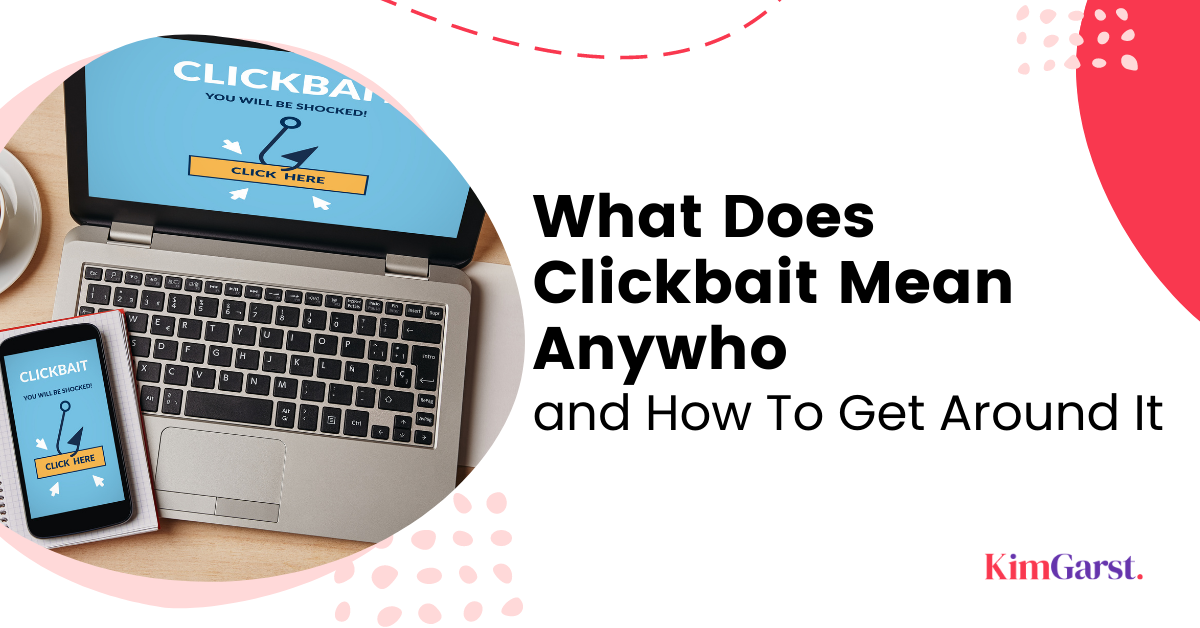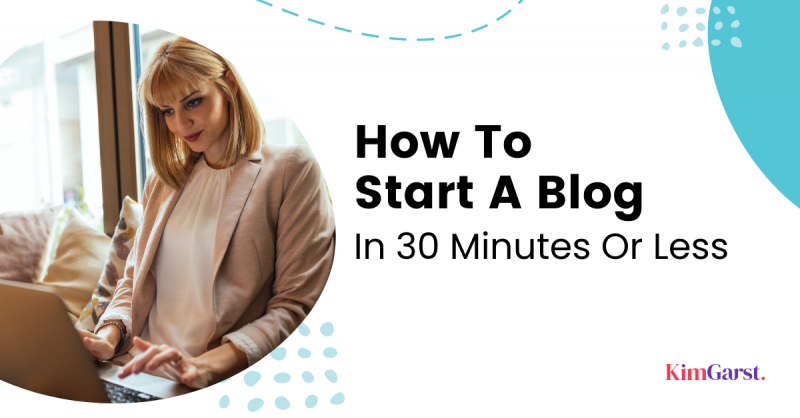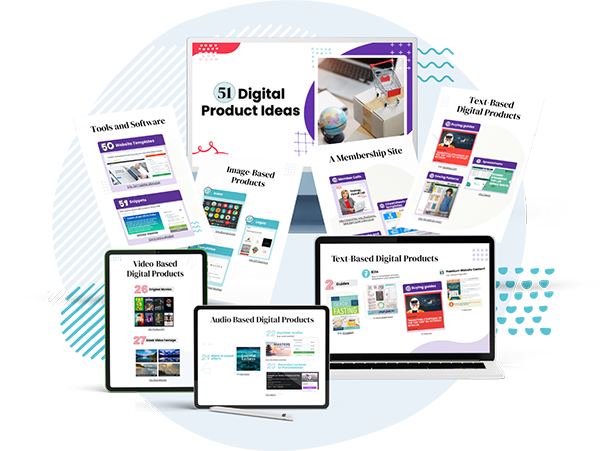“Clickbait” has become a real buzzword lately.
Generally speaking, it doesn’t have a positive connotation. We tend to associate the phrase with spammy websites that are looking to get traffic – at any cost.
Whether you’re a business owner, marketer or blogger, it’s important to understand what clickbait is, and how you can avoid creating it.

This post will walk you through everything you need to know about clickbait, including:
- What does clickbait mean, anyway?
- Why it’s so important to avoid creating clickbait
- How to avoid creating clickbait
- And how to create killer headlines that get tons of clicks…without being spammy.
Let’s dive in!
What is Clickbait, Anywho?
Dictionary.com defines clickbait as “content whose main purpose is to attract attention and encourage visitors to click on a link to a particular web page”.

Facebook offers a similar – if slightly more negative – definition:
Content that is “designed to get attention and lure visitors into clicking on a link.”
“Lure” is a great way to describe what clickbait is intended to do!
You’ve probably seen “clickbaity” headlines like these on social media:
“She Tried to Break Up With Him…and You Won’t Believe What Happened Next!”
“This One Weird Trick Will Make You Millions…Guaranteed!”
“21 Hacks to Supercharge Your Sales. #17 Will Change Your Life!”
What these headlines all have in common is HYPE – they promise something big in exchange for clicking the link.
But as you’ve probably experienced many times before, clicking on these types of links often results in disappointment…because the content of the blog post or article you click through to really doesn’t live up to what’s been promised.
For example, that “one weird trick that will make you millions” turns out to be not all that weird, and not all that effective.
And that sales hack that will change your life? Surprise! It didn’t.
Generally, when we talk about clickbait, we’re referring to headlines that are created for the sole purpose of enticing a click – without having the relevant content (e.g., blog post) to back it up.
[click_to_tweet tweet=”? Generally, when we talk about clickbait, we’re referring to headlines that are created for the sole purpose of enticing a click – without having the relevant content (e.g., blog post) to back it up. ” quote=”? Generally, when we talk about clickbait, we’re referring to headlines that are created for the sole purpose of enticing a click – without having the relevant content (e.g., blog post) to back it up. “]In other words, if you create a headline that promises something but doesn’t deliver – you’ve just created clickbait!
Why You Need to Avoid Clickbait
Most sensible people will understand that avoiding clickbait (both creating it and clicking on it) is a good idea.
But as a business owner, the impact of regularly using clickbait can actually be really serious – so you should be doing whatever you can to avoid it!
Here are just a few ways creating clickbait can and will hurt your business.
>> It will destroy your credibility
If you inadvertently create clickbait from time to time (remember, this is creating an alluring headline without having the content to back it up), your audience will probably forgive you.
But if you make a habit of purposely coming up with outrageous or “hypey” headlines, I can guarantee your reputation will suffer.
While you may attract clicks and traffic in the short-term, those people are going to quickly stop trusting you – which means those will be one-time clicks…not long-term readers, followers or customers.
>> It will hurt your social media reach
Last year Facebook began taking serious action against websites that regularly post clickbait headlines.
Using their world-famous <tongue in check> algorithms, they were able to identify sites that consistently engaged in clickbait, and then reduced their visibility in people’s newsfeeds.
Since that time, Facebook has also figured out ways to reduce the reach of clickbait at the post level – meaning they can now identify and penalize individual posts that aren’t going to live up to users’ expectations.
This means if you’re using clickbait titles on Facebook, you can now fully expect your reach and visibility to suffer!
>> It will hurt your search rankings
I hope the two negative effects above are enough to make you want to avoid creating clickbait.
But if not, here’s another one for you: creating clickbait on your website can actually damage your website’s SEO.
Think about it: While people will undoubtedly click through to your site when they see a clickbait title they’re interested in, do you think they’ll end up linking to or sharing your content on social media?
That’s a big fat NO!
And since getting exposure and links for your content are key to getting high search engine rankings, you’ve just shot yourself in the foot.
You’re FAR better off creating amazing content with headlines that may not get quite as many clicks…but that will actually deliver on what they’ve promised.
How to Avoid Click Bait
Okay, so we’ve established that creating clickbait is a bad thing, right?
But how can you avoid creating it…even unintentionally?
Following are three things you should avoid doing if you don’t want to create click bait!
1. Don’t use exaggerated titles
Avoid using crazy, hyped up, over-the-top headlines that make an impossible promise.
For instance, using “guaranteed” in your headline makes a really big promise. So unless you’re 100% sure you can guarantee your readers a specific result or piece of knowledge, don’t use this word!
Facebook gives this example of an exaggerated, clickbait headline: “WOW! Ginger tea is the secret to everlasting youth. You’ve GOT to see this!”
2. Don’t use headlines that leave out a key piece of information
I’m sure you’ve seen these types of titles before. Some examples could be:
“THIS is the #1 Secret to Taking Off 10 Pounds in a Week.”
“One Man Found the Key to Saving His Marriage…And You’ll Never Believe What it is”.
Facebook offers this example: “When She Looked Under Her Couch Cushions And Saw THIS.”
When it comes down to it, just don’t force your readers to click on your headline to get a critical piece of info, or to find out what the heck your content is actually about!
3. Don’t use headlines that will leave your visitors disappointed
Given how hard it can be to drive traffic to your site, I understand the temptation to use sensational headlines to get those coveted clicks.
But as we already talked about above, while this may work in the short term, it’s going to cause you BIG problems in the long term.
When in doubt, use titles that are really descriptive and that accurately convey what your blog is about.
Wondering exactly how to create headlines that are 100% accurate, but that ALSO get tons of clicks?
Keep reading!
How to create headlines that will send you floods of traffic
Okay, so we’ve learned how to avoid creating clickbait headlines.
But, how about how to create headlines that ACTUALLY get clicks and drive traffic…without being spammy or misleading?
This final section will focus on five strategies you can use to create amazing headlines that actually deliver the goods!
1. Use popular, descriptive titles

“How to” titles (like this one on how to start a blog) are great for getting clicks
We’ve found that what works best on our blog is using simple, straightforward titles that tell our readers exactly what they’re going to get by clicking on the title.
Some examples of these types of headlines include:
Questions: “What’s the Best Way to Get More Clicks?”
How To’s: “How to Get Your First 1,000 Followers”
Newsy Titles: “New Research: Best Subject Lines for Email Opens”
Ways/Tips/Tricks: “20 Tricks to Get Engagement in Your Facebook Group”
Benefits: “The Secret to Getting More Clients With Less Work”
Listicles: “Top 10 Ways to Boost Your Self-Confidence”
These types of titles may not be QUITE as alluring as, say, “Man Gets Swallowed by Elephant…You Won’t Want to Miss What Happened Next!”, but I can guarantee they’ll work better for you in the long run 😉
2. Put your own spin on popular titles
It can be hard to come up with completely original titles that actually get clicked on…so why not build off titles that have already proven to be popular?
One of my favorite ways to do this is to go to popular sites and scope out what kinds of titles they’re using. Big sites like Buzzfeed, ViralNova, and UpWorthy spend tons of time and money on testing and perfecting their headlines…so why not benefit from their hard work?
I’m NOT saying you should steal their headlines! But it can be helpful to scroll through their posts, grabs words, phrases or formats that make sense for your article and then put your own spin on them.
3. Use a headline generator to get some ideas

Have you ever just stared at a blog post and had NO idea what title to give it?
Online headline generators can be great little tools for getting your creative juices flowing. Generally, I wouldn’t rely on them to completely name your posts for you…most will need some tweaking or edits! But they can be a great place to start.
Here are a few you can try:
Portent’s Content Idea Generator
Sumo’s Kickass Headline Generator
Hubspot’s Blog Ideas Generator
Or, if you don’t need a totally new title, you can try CoSchedule’s Headline Analyzer to tweak and perfect your existing title!
4. Spice up your titles with adjectives
Another strategy we find that works well is using catchy adjectives in our titles. This strategy can take a regular, boring title, and turn it into something people can’t resist…and all by adding one word.
Some examples of adjectives you can use include:
- Outrageous (“10 Outrageous Ways to Get New Clients”)
- Amazing (“Amazing Tools Every Business Owner Needs”)
- Unusual (“20 Unusual Tricks for Optimizing Your Website”)
- Mind-Blowing (“5 Mind-Blowing Ways to Lose Weight, Fast”)
- Killer (“Killer Strategies for Getting Found Locally”)
- Little-Known (“Little-Known Ways to Boost Your Intelligence”)
- Quick and Easy (“Quick and Easy Sales Tips for New Business Owners”)
5. Test, test, test…and test some more!

Thrive’s Headline Optimize will ensure your content always gets as many clicks as possible!
Even highly-skilled copywriters don’t usually knock their titles out of the park on the first try. This is why testing is so important.
When you create a new post, choose three or so headlines you want to test. Then try out each headline for a set period of time – for instance, for three days.
This is pretty easy to do on social media. Simply share the post several times, each time with a different title.
This can be a bit trickier to do on your blog since you probably won’t want to actually change the title or URL of your post (as this can mess with your SEO).
However, with a cool little plugin like Thrive’s Headline Optimizer, you can easily show different headlines to different website visitors – and then have the plugin automatically choose the highest-performing one.
Easy peasy!
Final thoughts
I trust this post has shown you how clickbait headlines can negatively impact your business and have given you the encouragement and strategies you need to avoid creating them.
To summarize – Creating clickbait headlines may be tempting, but it’s just not worth it! Any short-term gains you may make will be greatly over-shadowed by the long-term impact to your reputation.
[click_to_tweet tweet=”? Creating clickbait headlines may be tempting, but it’s just not worth it! Any short-term gains you may make will be greatly over-shadowed by the long-term impact to your reputation. #BizTips” quote=”? Creating clickbait headlines may be tempting, but it’s just not worth it! Any short-term gains you may make will be greatly over-shadowed by the long-term impact to your reputation. #BizTips”]Looking for more help with your headlines? Check out these posts on the blog:
Social media headlines: The Ultimate Guide to Writing Social Media Headlines that Gets More Clicks
Blog post titles: A Quick and Easy Formula for Writing Clickable Blog Titles
Email subject lines: The Secret to Writing Kick Butt Subject Lines
Would love to hear from you: Are you guilty of creating clickbait headlines? Are you going to use any of the strategies above in the future? Share below!
About Author
Kim Garst
Kim Garst is a renowned marketing strategist and speaker who is trailblazing the use of artificial intelligence in digital marketing. With over 30 years of experience as an online entrepreneur, Kim helps entrepreneurs grow their business and authority online by using AI technology. She is leading the way with proven AI frameworks that help entrepreneurs build authority in their space.
She is keynote speaker and an international best-selling author of Will The Real You Please Stand Up, Show Up, Be Authentic and Prosper in Social Media.
Named by Forbes as a Top 10 Social Media Power Influencer, Kim is well-known for her skill to simplify complex technology and make the use of AI understandable for business growth. Her relatable, actionable advice helps guide new entrepreneurs to harness the power of AI to succeed in digital marketing. Kim is leading the way in combining human and technological skills to create a new model for AI-powered marketing.


1 thought on “What Does Clickbait Mean Anywho and How To Get Around It”
Kim, I also consider it to be clickbait when the site requires visiting a large number of pages to get the complete story.